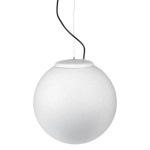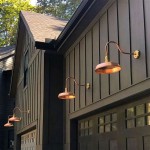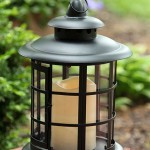Outdoor Photography Lighting Basics
Outdoor photography offers a wealth of natural light, but understanding the basics of outdoor lighting can significantly elevate your images. From the golden hour's warm glow to the harsh midday sun, every moment presents unique lighting conditions that influence the mood and impact of your photographs. Mastery of these conditions allows you to capture stunning visuals, highlighting textures, details, and the essence of your subjects.
Understanding Natural Light
Natural light is the cornerstone of outdoor photography, and its characteristics vary greatly throughout the day. Understanding these variations is key to making informed decisions about composition, exposure, and capturing the desired aesthetic.
The direction of sunlight influences the shadows and highlights in your image. Front lighting, with the sun behind the photographer and illuminating the subject directly, creates a balanced and even lighting effect, suitable for portraits and landscapes. Side lighting, with the sun at a 90-degree angle to the subject, introduces dramatic shadows and highlights, enhancing texture and dimension. Backlighting, with the sun behind the subject, creates silhouettes and halo effects, adding a sense of mystery and drama.
The time of day also plays a crucial role in the quality and direction of light. The "golden hours," occurring shortly after sunrise and before sunset, offer warm, soft light that flatters subjects and creates a romantic atmosphere. Midday sun, while providing ample light, can be harsh and create deep shadows, often requiring adjustments in exposure and post-processing.
Mastering Exposure
Exposure is the amount of light that reaches the camera sensor, determining the overall brightness of your image. Achieving the correct exposure is essential for capturing well-balanced photographs, and outdoor lighting conditions often require adjustments to avoid overexposure or underexposure.
Your camera's meter provides a starting point for determining proper exposure. However, it's crucial to consider the dynamic range of the scene—the difference between the brightest and darkest areas. If the scene has high contrast, with both bright highlights and deep shadows, the camera's meter may not accurately represent the desired exposure.
For scenes with high contrast, consider using exposure bracketing, taking multiple shots with different exposures to capture detail in both the highlights and shadows. Alternatively, using a graduated neutral density (GND) filter can help balance the light between the sky and the foreground, especially during midday.
Harnessing the Power of Diffused Light
Diffused light, such as on an overcast day or in the shade, offers a gentler light quality that is ideal for portrait photography. This soft light minimizes harsh shadows and creates a more flattering effect on subjects.
When shooting in direct sunlight, using a diffuser, such as a reflector or a large sheet of white fabric, can soften the light and reduce harsh shadows. Reflectors can bounce light back onto the subject, brightening shadows and adding dimension.
In addition to portraits, diffused light can also enhance landscapes, creating a sense of tranquility and mood. The absence of strong shadows allows details and textures to be captured with greater clarity.

Essential Lighting Tips For Outdoor Photography Setup Digital Lessons

A Quick Simple And Basic One Light Outdoor Photography Tutorial

Natural Light Photography Tutorial For Beginners With Diagrams

Creative Lighting Techniques For Portrait Photographers Rangefinder

11 Outdoor Portrait Photography Tips For Easy Shots

How To Achieve Multiple Portrait Lighting Effects With One Flash Unit

Outdoor Flash Photography Tips With Children Pets

A Quick And Simple Portrait Photography Lighting Tutorial

Applying The 3 Light Studio Setup To Outdoor Portraits

Beginners Guide To Photography Lighting Techniques Pro Tips







